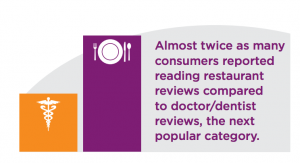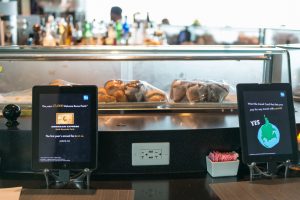Attract more diners and build loyalty with a personalized dining experience
It’s said that you are what you eat and you attract like-minded individuals.
It’s also true for restaurants. The way you interact with your customers determines who comes to your establishment.
In the competitive restaurant industry, brands must continually maintain customer loyalty, attract new customers, and keep cross-channel engagement high.
And it starts with how you make your customers feel.
Almost 9 out of 10 U.S. consumers are willing to pay more for a superior customer experience.
To attract customers and build loyalty, your restaurant needs to deliver a seamless customer-centric dining experience through both online and in-person interactions.
And it starts before they step into your establishment…
When your customers first interact with your brand — whether they’re signing up for a newsletter, booking a table, or placing an order online — entice them to set up a profile so you can start collecting customer data.
This single customer view is the foundation to personalizing your customers’ dining experience that will attract and retain more customers.
With each interaction, you’ll gather more information on your customers. The customer profiles will get richer, providing you with more data to deliver an outstanding experience in your restaurant:
Customer Preferences
Delight your customers with pleasant surprises and relevant recommendations by inviting them to add information about their preferences or dietary restrictions to their profiles when they make a reservation.
People are wary about giving away their information, so make sure to explain how you’ll be using the information to personalize their experience in your restaurant and include a link to your privacy policy.
Social Media
Augment a customer’s in-person experience with social media interactions while they’re in your restaurant.
Encourage your customers to check in and share their experience, e.g., post photos and tag your business.
Consider rewarding them for sharing your business with their friends and followers, e.g., with a small discount or a complimentary dessert for their next visit.

Listen to your customers’ feedback through social media. If you can link up social media comments with customer profiles, you can take note of their preferences to provide a personalized experience during their next visit.
You can even get your customers to participate in designing the next menu items by asking questions or doing a poll on social media.
Mobile App
Encourage customers to place their orders on a mobile app, either for pick up immediately or at a scheduled time, to deliver a seamless takeout experience.
Your customers can set their preferences for easy access to their favorite dishes, or order from a list of past purchases.
In addition, you can set up push notifications to offer special deals at times when customers tend to place their orders or when they’re in the vicinity of your restaurant.
Leveraging this strategy, TGI Fridays increased mobile conversion rate by 35%.

Customize Dining Experience
Use the information on your customers’ profiles, such as birthdays or anniversaries, to help customers create special memories.
Perhaps you can send an email reminder to book a table for their spouses’ birthday and help them set up just the right atmosphere for a romantic night out.
Or, you can find out if they’re celebrating anything special when they book a table (e.g., a job promotion) to help them create the perfect ambiance for the occasion.
Wow Your Customers With the Right Experience
With so many ways to deliver a personalized message, it can be daunting to choose which type of interactions to capitalize on.
Make sure you design an experience that’s on-brand and engaging for your target market.
For example, Chipotle caters to their on-the-go customers with an app with which they can save their favorite orders for a quick and seamless experience.
The easy-to-navigate tools helps eliminate the frustration of standing in line and waiting for an order to get prepared.

After putting in the effort to design a seamless experience across all touch points, don’t forget to tell your customers about the different channels through which they can interact with you.






